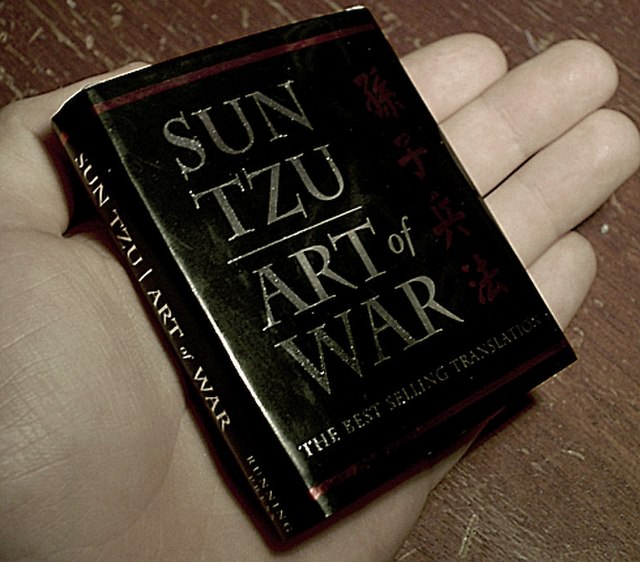Sun Tzu was a Chinese military general, strategist, philosopher, and writer who lived during the Eastern Zhou period. Sun Tzu is traditionally credited as the author of The Art of War, an influential work of military strategy that has affected both Western and East Asian philosophy and military thought. Sun Tzu is revered in Chinese and East Asian culture as a legendary historical and military figure. His birth name was Sun Wu and he was known outside of his family by his courtesy name Changqing. The name Sun Tzu—by which he is more popularly known—is an honorific which means "Master Sun".
Qing-era representation of Sun Tzu
The Yinqueshan Han Slips unearthed in 1972 include Sun Tzu's Art of War, collection of Shandong Museum
A copy of The Art of War written on bamboo
Statue of Sun Tzu in Yurihama, Tottori, in Japan
The Art of War is an ancient Chinese military treatise dating from the late Spring and Autumn period. The work, which is attributed to the ancient Chinese military strategist Sun Tzu, is composed of 13 chapters. Each one is devoted to a different set of skills or art related to warfare and how it applies to military strategy and tactics. For almost 1,500 years, it was the lead text in an anthology that was formalized as the Seven Military Classics by Emperor Shenzong of Song in 1080. The Art of War remains the most influential strategy text in East Asian warfare, has influenced both East Asian and Western military theory and thinking, and has found a variety of applications in myriad competitive non-military endeavors across the modern world including espionage,
culture, politics, business, and sports.
The Art of War
Fragments of The Art of War discovered as a part of the Yinqueshan Han Slips, showing the version of The Art of War that was popular in Han dynasty (206 BC – 220 AD)
The beginning of The Art of War in a classical bamboo book from the reign of the Qianlong Emperor
Running Press miniature edition of the 1994 Ralph D. Sawyer translation, printed in 2003






